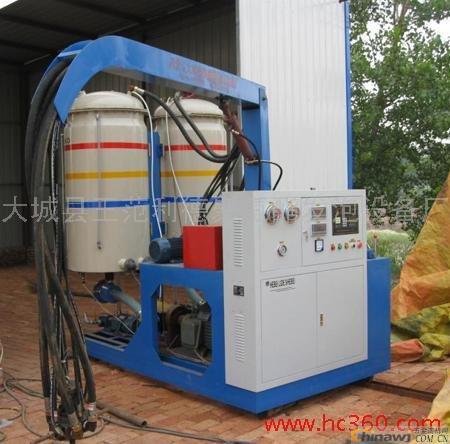High-pressure and low-pressure polyurethane foaming machines differ significantly in terms of cost, performance, and environmental impact. The high-pressure foaming machine is generally more expensive due to its advanced design and precision engineering, while the low-pressure version is more affordable and easier to manufacture, even in China. Despite the lower cost, the low-pressure machine can still produce high-quality foam with a stable and uniform cell structure, offering good insulation properties.
However, the mixing efficiency in low-pressure machines tends to be less effective, leading to uneven foam distribution and potentially weaker insulation performance. On the other hand, high-pressure foaming machines provide superior mixing due to the high pressure (120–200 bar) inside the mixing chamber, resulting in better material homogeneity and foam quality.
One major drawback of low-pressure machines is the difficulty in cleaning. Due to the larger internal space of the mixing head, residual materials often remain after use, requiring the use of harmful solvents like chlorinated hydrocarbons for cleaning. This not only increases maintenance costs but also poses environmental risks. In contrast, high-pressure machines are easier to clean, reducing the need for harsh chemicals and minimizing environmental impact.
In terms of raw material usage, high-pressure machines are more efficient, using about 5–10% less material than low-pressure ones. Low-pressure systems tend to leave more residue, which leads to higher material consumption. Additionally, high-pressure machines are better suited for automated production lines, making them ideal for large-scale manufacturing. Low-pressure systems, on the other hand, are harder to automate and require more manual intervention.
Another key difference is the occurrence of late foaming. High-pressure machines, with their better mixing efficiency, reduce the risk of this issue, ensuring consistent product quality. Low-pressure machines, due to poor mixing, are more prone to late foaming, which can affect the final product's integrity.
While low-pressure foaming machines are still used in some regions, they have been banned in Europe due to environmental concerns. High-pressure machines, on the other hand, are preferred in many industries for their reliability, efficiency, and eco-friendliness.
For more information, visit: http://news.chinawj.com.cn
 Submission:
Submission: 
 Submission:
Submission: 
Electric Ball Valve,V-Type Ball Valve,Switch Ball Valve,Electric O-Shaped Ball Valve
CEPAI Group Co., Ltd. , https://www.jscepai.com
